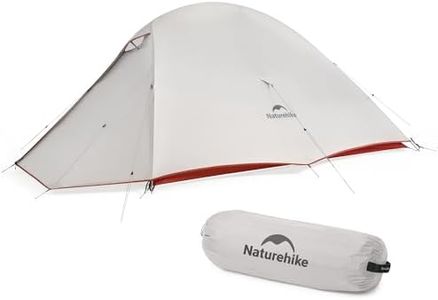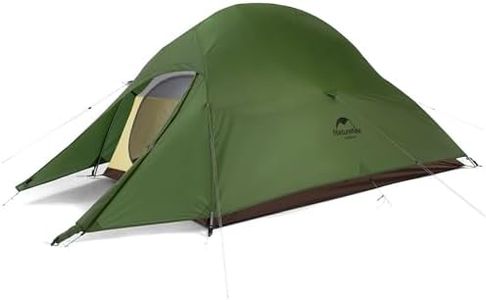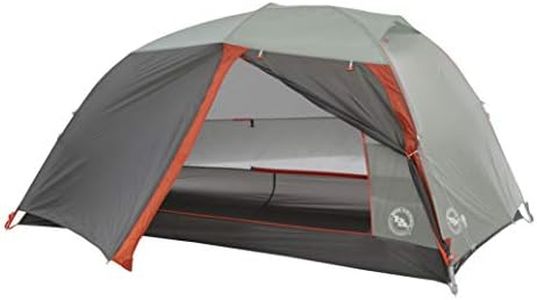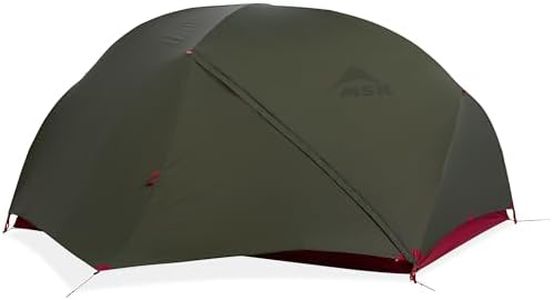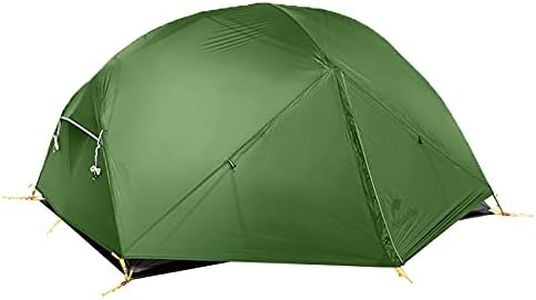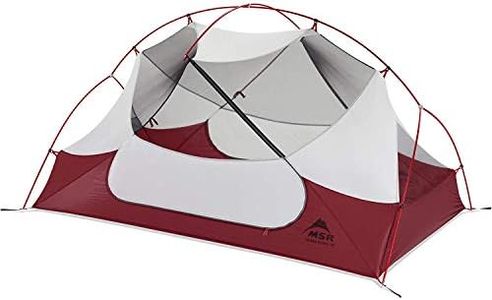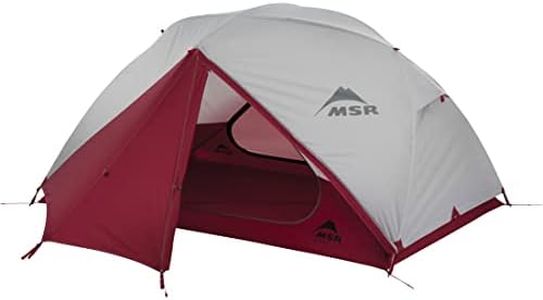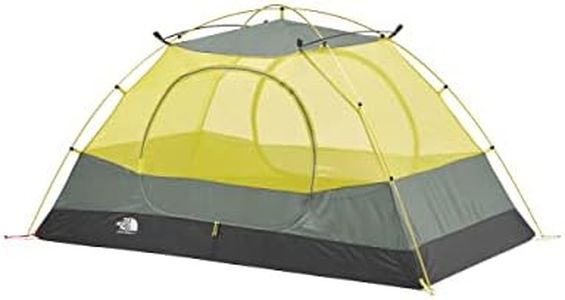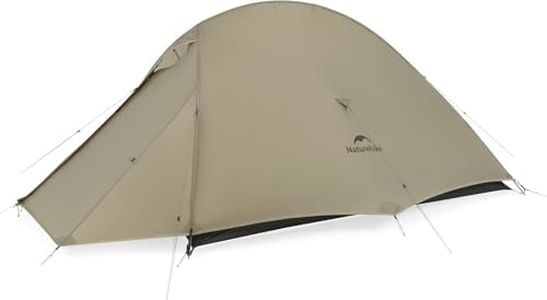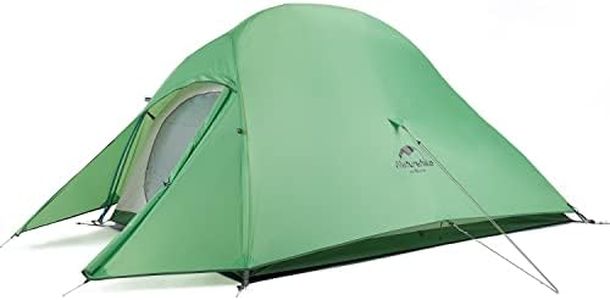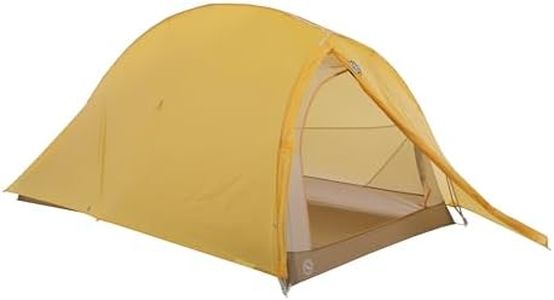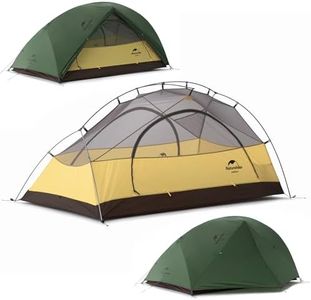We Use CookiesWe use cookies to enhance the security, performance,
functionality and for analytical and promotional activities. By continuing to browse this site you
are agreeing to our privacy policy
10 Best Two Person Tents
From leading brands and best sellers available on the web.By clicking on a link to a third party's website, log data is shared with that third party.
Buying Guide for the Best Two Person Tents
Choosing a two-person tent is about finding the right balance between comfort, weather protection, portability, and ease of use. Before you buy, think about how and where you'll use the tent most often, such as camping in the wilderness, festivals, backpacking trips, or casual weekend getaways. Reflect on your priorities—whether it's spaciousness, light weight, quick setup, or durability. The best tent for you will fit your personal camping style, anticipated weather conditions, and how much gear you usually bring along.WeightWeight refers to how heavy the tent is when packed. This is especially important if you plan on backpacking or hiking with your tent, since every gram can make a difference. Lighter tents (typically under 2 kg) are great for backpackers who prioritize easy carrying, but may offer less space or fewer features. Mid-weight tents (around 2-3 kg) strike a balance between comfort and portability, suitable for short hikes or car camping. Heavier tents are best when you don’t have to carry them far from your vehicle, as they tend to be more spacious and durable. Choose based on how much you'll need to carry your tent and your comfort with carrying weight.
Season RatingThe season rating tells you what kind of weather the tent is designed for. Three-season tents are most popular, offering good protection in spring, summer, and fall—including moderate wind and rain. Four-season tents are built to handle harsher, winter-like conditions and snowfall, with stronger poles and less mesh to keep out cold air, but are often heavier. Two-season tents are best for mild, fair-weather camping with little risk of bad weather. Consider the climate and seasons you’ll camp in most, and pick a tent designed for those conditions.
Floor Space and Interior HeightFloor space indicates how much sleeping area you have, while interior height is how much headroom there is inside. For two people, floor space varies—from snug, just-for-sleeping setups to roomier tents with space for gear. More space means greater comfort but usually more weight and bulk. If you want to sit up comfortably or store backpacks inside, look for taller interior height and wider floor dimensions. If you’re comfortable with just enough space to sleep side by side, a more compact tent can save weight. Base your choice on how much space you and your camping partner need for comfortable rest and gear storage.
Setup MechanismThis refers to how the tent is assembled. Freestanding tents have poles that keep the tent upright by themselves, so you can move them before staking down—making setup easy even on rocky ground. Non-freestanding tents rely on stakes and guy lines for shape and are usually lighter, but take more time and care to pitch. Some tents have color-coded poles or quick-clip setups for faster assembly. If you value a fast, simple setup (especially after a long day outdoors), look for user-friendly designs. Choose the mechanism that matches your patience and typical campsite terrain.
Weather ResistanceWeather resistance covers how well the tent protects against rain, wind, and cold. Important factors are waterproofing (usually indicated by the hydrostatic head rating in mm), quality of seams, and wind stability (affected by pole design and shape). Less weather-resistant tents work fine for fair-weather camping, but if you expect frequent rain or gusty winds, look for higher waterproof ratings (over 1500mm) and solid, well-designed frames. Think about the weather you expect to face and choose a tent that offers the right level of protection.
VentilationVentilation is about how well air moves through the tent, helping to manage condensation and keep you comfortable. Good ventilation comes from mesh panels, vents, and double-wall designs (tent and rainfly). Tents with more mesh are great for warm climates and reduce stuffiness, but offer less warmth in cold weather. If you camp mostly in dry, temperate areas, pick a tent with plenty of mesh and vents. If you face a mix of climates, choose one where you can adjust airflow to match conditions.
Vestibules and StorageVestibules are covered areas outside the tent door, useful for storing shoes, packs, or cooking gear out of the rain but not inside your living space. Some tents have one, two, or none. Inside, pockets and gear loops help organize smaller items. Think about how much gear you’ll want to store and how much you care about keeping mud and clutter out of the main area. If you like to keep things tidy and dry, or want space to cook out of the rain, go for a tent with ample vestibule and storage options.

